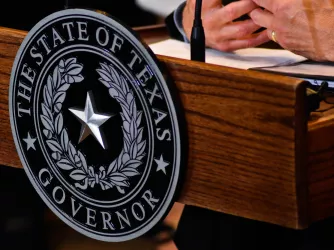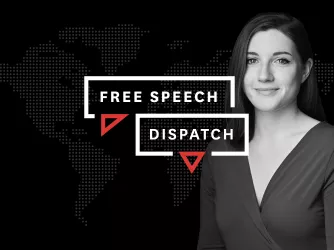Table of Contents
Student Paper Highlights University of Southern Indiana's Speech Codes
In an article published yesterday in The Shield, the student newspaper at the University of Southern Indiana (USI), student Zach Evans highlights the unconstitutional speech policies in force at USI.
Evans opens with an examination of USI's free speech zone policy.
With that in mind, what does free speech mean at USI? It all begins in the area set aside for the sole purpose of the exercise of free speech.
Universities were at one point in time were (sic) the breeding ground for social activism and political protest.
During the 1960's and 70's the Vietnam War polarized young adults who organized en masse to oppose the war.
It was following this period of time, according to the ACLU, that schools began regulating the areas in which students could express their freedom of speech.
"There is a free speech area. It is located in the grass area / sidewalk immediately west of the bus stop between the Orr Building and the UC Building expansion," Director of Security Steve Woodall said "The free speech area can be utilized by both unsponsored and sponsored speakers."
There is a problem with USI current free speech zone: half of the location is currently occupied by construction equipment.
Another problem is that it's unconstitutional. FIRE rates the policy as a yellow light, meaning, as Evans writes, that "the policy could potentially be abused outside of its intended nature to restrict free speech." That's not to say the policy is not a serious threat to free expression. Evans' interview with student Justin Earle is telling in how insidious yellow-light policies can be: "I had no idea where the free speech zone is or that we even had one to be honest. Does that mean we can't have speak out anywhere else?" Possibly. Evans recounts that in a 2006 protest in opposition to former President George W. Bush, campus security kept students corralled in the free speech zone.
As Evans discusses, FIRE rates one of USI's policies as a red light, "rule 2.9 in the Student's Rights and Responsibilities on Sexual Harassment," which states:
Sexual harassment includes any interpersonal attention of a sexual nature that is unwanted and unwelcome. Examples may include, but are not limited to, the following: ... a pattern of conduct (not legitimately related to the subject matter of the course if a course is involved or to employment if employment is involved) that tends to bring discomfort and/or humiliation, which may include comments of a sexual nature, or sexually explicit jokes, statements, questions, or anecdotes; or a pattern of conduct that would tend to bring discomfort or humiliation to a reasonable person at whom the conduct was directed, which may include unnecessary touching, patting, hugging, or brushing against a person's body; remarks of a sexual nature regarding a person's clothing or body; or remarks about sexual activity or speculations about previous sexual experience.
Evans explains that per FIRE's ranking system, the policy earns a red light because of its vague language and the fact that it prohibits speech that would be protected in society at large. What's more, there are four yellow-light policies at USI, in addition to the free speech zone policy, that could be used to censor or chill student speech.
Evans closes his article by citing statistics from FIRE's latest speech code report, Spotlight on Speech Codes 2010, and discussing some other schools where free speech zones have been debated.
FIRE reports on 375 universities and colleges both private and public. Of those schools, FIRE has deemed 71 percent to have a clear and substantial violation of free speech in the school's policies.
According to FIRE, "A college campus-as the ultimate free speech zone-should be the last place where expression is regarded with suspicion."
The controversy over designated free speech zones has been discussed in many college campuses throughout the country, including New Mexico State University, University of South Florida and locally Indiana University.
In most instances, the universities either vacated their free speech zone policy or amended the language.
Thanks to Evans for this excellent discussion of USI's speech codes. We only add that FIRE has defeated free speech zones at a number of universities. As Azhar recounted yesterday, universities have folded under pressure from FIRE at Southwestern College in California, Valdosta State University, University of North Texas, and most recently at San Francisco State University, and from federal courts as part of FIRE's Speech Code Litigation Project at Texas Tech University, Tarrant County College, and Citrus College in Florida.
Recent Articles
FIRE’s award-winning Newsdesk covers the free speech news you need to stay informed.

Gov. Greg Abbott’s order ‘hardening state government’ against China is dangerously hard to parse

Right, left, and in-between: Can we bring our differences to the table?

From the UK to Germany to Singapore: Police are watching what you post
